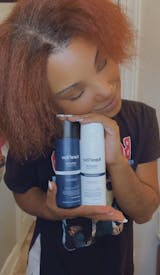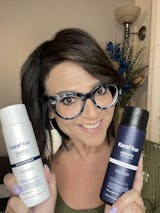Hair lightening/bleaching facts

The bleaching process is used to lighten the hair. This is done by the peroxide agent which normally has a yellow tint that reacts with the melanin in hair removing the colour. This is known as an irreversible chemical reaction, where the bleach dissolves the melanin molecule within your hair. At this point there is still melanin present in your hair, however, the dissolved molecules are colourless.
Once your hair is bleached it is likely to have a pale yellow tint, this yellow colour is the natural colour of the structural protein in hair known as keratin.
Bleach is known to also react more with the dark eumelanin pigment than with phaeomelanin, hence why some red or gold remaining colour may endure after lighting. Hydrogen peroxide is a popular lightening agent, the peroxide which is the alkaline solution unwraps the hair shaft allowing the peroxide to react with the melanin in your hair.
Temporary hair colouring

Both semi-permanent and temporary hair colours are likely to guarantee acidic dyes onto the outer hair shafts or may consist of minor pigment molecules that may slip inside the hair shaft. This result then comes from using a small amount of peroxide or in some cases even none whatsoever. In other cases there could be a collection of colourant molecules moved into the hair to formulate a huge complex inside the hair shafts.
Hair colouring products that do not contain ammonia are known as temporary hair dyes, where regular shampooing will ultimately remove the temporary hair colour. This hair colouring method means that the hair shafts are not yet opened up during the process leaving your natural hair colour to remain retained after the product washes off.
Potential health risks
Scientists have claimed that millions of women use hair dyes that may contain chemicals linked to potential health risks, also explaining that these risks are contained within both home hair colouring kits as well as the dyes used at expensive salons. However, despite it being a heavy difference of opinion, the cosmetics industry has disputed the claim.
Products infused with chemically-based hair colouring can cause allergic reactions, leading to severe eye and skin irritation states the American cancer society. In rare cases, irritation involving the eye can lead to blindness. Therefore it is advised for products to be tested on a small area of the skin before being used on the hair and scalp for safety reasons.











